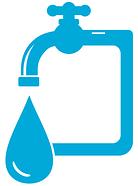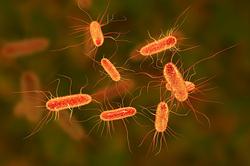
kelttt/Shutterstock.com
WWT Drinking Water Quality Conference
Mike Waite, FWR Water Supply Co-ordinator

kelttt/Shutterstock.com
Water & Wastewater Treatment’s 4th annual Drinking Water Conference was held on 27 November 2019 in Birmingham, and once again it provided a range of interesting topics with several expert speakers. The theme of the morning session was Adapting to new drinking water regulation and emerging trends.
The welcome from Paul Vallely (Anglian Water) took the form of a short paper in which he mentioned that AW was nearing full compliance for metaldehyde and described the company's use of the Newmarket area as a trial zone for innovation.
Marcus Rink (DWI Chief Inspector) covered Drinking water regulation and the new Directive which is presently being developed. He noted that Brexit introduces a measure of uncertainty for the UK. Although compliance across the EU with the current Directive is >99%, in deciding to recast the Drinking Water Directive the Commission decided that although the current Directive was working well there was room for improvement. The aim of the recast is to improve the quality of drinking water and provide citizens with greater access to water and information about it. A total of 18 new parameters are under consideration (none are microbiological). It aims to update the existing standards, introduce a risk-based safety assessment to the monitoring of water, harmonise standards for products in contact with drinking water, improve rules on transparency and consumers’ access to information, and improve access for all people to drinking water. One radical idea is to make available free access to Drinking Water in public spaces. (This comes full circle from the widespread removal of public drinking fountains in the latter part of the 20th century!)
Bob Taylor (Portsmouth Water) spoke about Funding priorities for AMP 7, pointing out that much more of the planned expenditure is on end-of-pipe solutions rather than for catchments. He also suggested that in the case of lead the focus was more on pipe replacement than on optimisation of treatment and distribution management. He suggested in the wake of Brexit the UK should look at Switzerland as a template. It has been the world's most innovative country for the past nine years and is the UK's third biggest trading partner outside of the EU. He also remarked that 80% of the UK water sector supports Ofwat’s proposed Innovation Fund.
In Changing approach to risk to improve resilience, Charmian Abbott (United Utilities) outlined the approach taken by UU. The company has established a systematic review of hazards at all of its water treatment works and in its networks and is embarking on a similar process for catchments.
At the end of the morning there were breakout sessions and I participated in Tackling lead in drinking water. Clair Dunn (Anglian Water) described the initiatives in AW. A total of 98% of AW region now has supplies which are phosphate dosed, and there were only four lead failures in 2018. The company introduced a customer contribution scheme to encourage customers to replace their service pipes by offering to cover part of the cost but there was limited take up and the scheme is being reviewed. The company gives leaflets on lead to expectant mothers as part of a ‘Bounty Pack’ and shows videos in some maternity hospital waiting areas. Clair also posed the question of whether a national approach is necessary. Andrew Dunbar (Scottish Water) pointed out that most customers believe there are no longer any lead pipes and under 30s are unaware of lead as a problem, never having encountered leaded petrol. Paul Hampton (Southern Water), having noted that DWI does not consider long-term dosing as a solution, posed several questions: Is universal pipe replacement feasible, even with grants? Is pipe lining a suitable strategy? And what if the PCV (Prescribed Concentration or Value) is reduced?
The afternoon began with a second breakout session, and I attended the group considering Impact of climate change which was introduced by a paper from Martin Padley (United Utilities) who stated that the industry needs to consider quantity, quality, and resilience. Global temperatures and CO2 levels are rising, more geosmin is being encountered and cloud cover is reducing. Floods and fires are a growing problem. Key questions include: what will be the effect on the supply/demand balance? how will raw water be impacted? and how can the industry plan for mitigation?

E.coli bacteria.
Credit: Kateryna Kon/Shutterstock.com
The afternoon theme explored New developments in water treatment processes and technologies. Colin Fricker (Consultant) covered Water network safety – the impact on public health when it all goes wrong. He described a large waterborne disease outbreak in Havelock, New Zealand which highlighted several deficiencies and lessons to be learned. The water source was only monitored monthly, being categorised as ‘secure’ and received no treatment nor disinfection despite obvious contamination risks. Despite an outbreak of campylobacter in 1998 and more than 5% of samples in the distribution system being positive for E.coli, the regulator detemined the source to be secure and no enforcement action was taken. A sample from a tanker which tested positive for E.coli was attributed to tanker contamination and even though a sample from the distribution system the following day was positive for E.coli, the decision to wait for further samples was taken. When, finally, advice to boil water was issued it was because of increased GP visits, school absences and sales of anti-diarrhoea medicines. The root cause of the problem was lack of regulation and enforcement and despite further (small) outbreaks, progress on regulation has been dilatory.
Isabel Douterelo Soler (University of Sheffield) then addressed the subject of antimicrobial resistance in drinking water systems. Indiscriminate use of antibiotics and inadequacy of waste water treatment has prompted the inclusion of antibiotics in the EU list of emerging contaminants. Biofilms can be a reservoir of antimicrobial resistant genes (ARG). Disinfection can increase the transfer of ARG and promote horizontal gene transfer to pathogens. Oxidative treatment appears promising for detroying ARG as does novel pipe materials to minimise biofilms. The suggestion of a probiotic approach could prove problematic with public acceptability. A key point is that antibiotic resistance is reversible and bacteria tend to lose ARG in the absence of continued selection pressure. (Read more about antibiotic resistance in our lead article.)
Stuart Knott (Anglian Water) looked at Using new biomonitoring techniques in combination to investigate water quality challenges, giving an overview of technologies used during investigations. He also described how AW was using flow cytometry as an aid to performance optimisation by detecting bacteria which themselves are not necessarily pathogens of high risk. Flow cytometry can provide data every 10 minutes which could enable rapid detection of events.
The final presentation came from David Reynolds (Thames Water) who considered Best practice for a health-based disinfection policy. Applying a safety continuum from very safe – through safe – to enhanced operation – and finally, unsafe: it is possible to set limits for various categories and specific pathogens in terms of disinfectant concentration and contact time. For Cryptosporidium it is possible to apply removal efficiencies for individual treatment stages and then set action limits based on the number of oocysts in the raw water.
All in all, an interesting day with lots of information to digest!